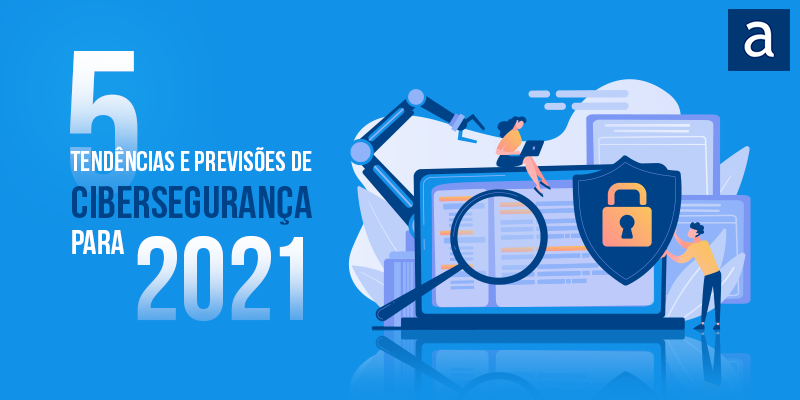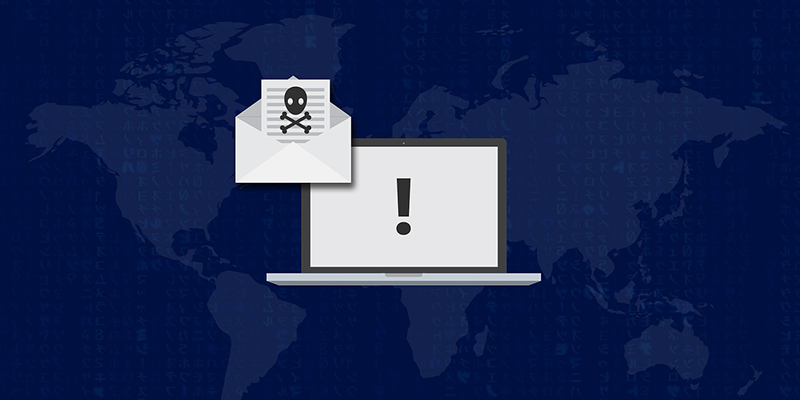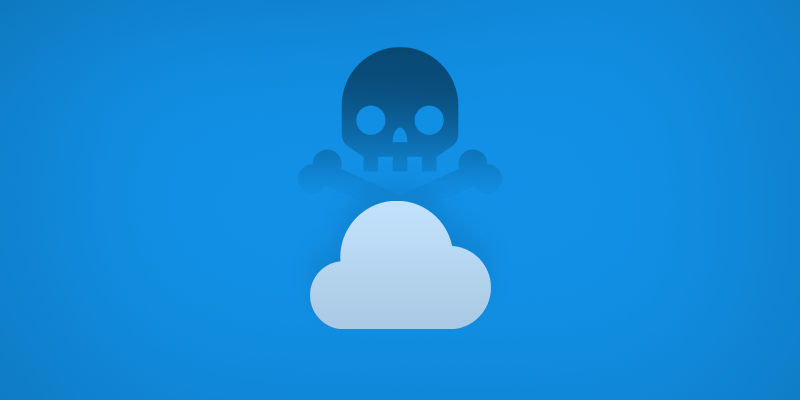5 cyber-security trends and forecasts for 2021

Do you know that a cyberattack is launched every 39 seconds? This is something that all companies – large and small – should be concerned about. No wonder the cyber security landscape has changed over 2020. The Covid-19 pandemic has been particularly challenging for security teams. Given the shift towards social distancing and teleworking for many sectors, cyber-security has become a top priority.
As businesses seek a transition to a new normality, here are the most common cyber-security trends to follow in 2021.

1. The threats of ransomware will continue to grow
.
71% of data breaches in 2020 are financially motivated, with 52% involving manual hacking, not stand-alone malware. This means that cybercriminals may actively attempt to violate their servers and databases in order to cause financial damage. Bailout attacks involving holding a company database hostage in exchange for some form of financial compensation have grown at an alarming rate, becoming a threat to thousands of organizations around the world.
The best way to prevent these attacks from advancing is to educate your team on how to handle emails and files from unverified sources. A single file downloaded to your company’s intranet can cause critical damage to the company’s financial well-being.

2. The threats of Cloud are increasing
.
As remote work and online collaboration intensified during the pandemic, the adoption of the cloud was critical for enterprises to ensure business continuity. Although organizations migrated to the cloud before the crisis, the pandemic accelerated the transition process.
However, the rapid migration to the cloud introduces several new security challenges and threats, including misconfigured storage in the cloud, reduced control and visibility, incomplete data removal, and vulnerabilities in the cloud. This is why protecting infrastructure in the cloud from cyber threats must be an urgent priority for all businesses by 2021.

3. Phishing attacks will continue to evolve
.
With the shift from on-site operations to cloud-based services, security teams should not be surprised by this forecast. O phishing has always been a popular cybercrime tactic, in fact, before the pandemic, phishing was one of the most common and effective cyber attacks.
But we saw an outbreak of phishing emails during the pandemic, taking advantage of victims’ unfamiliarity with remote work applications and lack of knowledge of cyber security. In fact, when this attack was combined with fear and the need for information about Covid-19, cybercriminals became even more successful in getting users to click on phishing emails containing terms related to Covid-19, such as: Coronavirus, Covid-19, Masks, Vaccine, among others.

4. A focus on AI powered solutions
Advances in Artificial Intelligence (AI) are increasing our ability to detect threats more successfully than ever before. One of the greatest threats to cyber systems is the difficulty in updating and correcting in real time. As new threats become known to the hacker community, technology vendors need to quickly produce fixes on potentially compromised systems.
These affected systems have often relied on their human counterparts to take the necessary steps to rectify weaknesses. However, with AI, sufficiently intelligent networks are able to process their weaknesses and repair them in real time, leading to less downtime and less stress for IT teams. These solutions will gradually reach the market in the coming years, and this trend in cyber security will continue to grow. Until then, a good security and maintenance plan is needed for your IT department to ensure that critical systems remain up-to-date with the latest security patches.

5. Greater awareness of data privacy
Companies create, collect and store a large amount of data and these digital footprints grow every year. Data is now one of the world’s most valuable assets. As the data that organisations create, collect and store increases, so does their attractiveness to hackers. Particularly when they are finding easier ways to access data from remote workers through their less protected home networks. That’s why companies should implement a data protection policy that guides workers on how to keep personal data secure and ensure effective protection of endpoints, networks and emails.
But that is not all, according to the General Data Protection Regulation (GPSD), companies that process data must do so in accordance with the seven principles of protection and accountability outlined in Article 5.1-2:
Legality, fairness and transparency – The treatment must be legal, fair and transparent for the data subject.
Limitation of purpose – You must process the data for the legitimate purposes explicitly specified to the data subject when you collected the data.
Data minimisation – You must collect and process only the amount of data absolutely necessary for the purposes specified.
Excuracy – You must keep your personal data correct and up-to-date.
Limitation of storage – You may only store personal identification data for as long as is necessary for the specified purposes.
Integrity and confidentiality – Processing must be carried out in such a way as to ensure adequate security, integrity and confidentiality.
Responsibility – The data controller is responsible for being able to demonstrate the compliance of the RGPD with all these principles.
the threats of ciber security will continue to evolve in 2021
While cyber-security trends may be temporary, they are a good indicator of the future ahead. As technology evolves, we will inevitably encounter a new set of challenges in the IT sector.
We see these cybersecurity trends as some of the biggest challenges facing businesses and encourage all companies to continue to manage and educate their teams on these issues.
When it comes to threats to your business, it’s always better to stay one step ahead!




